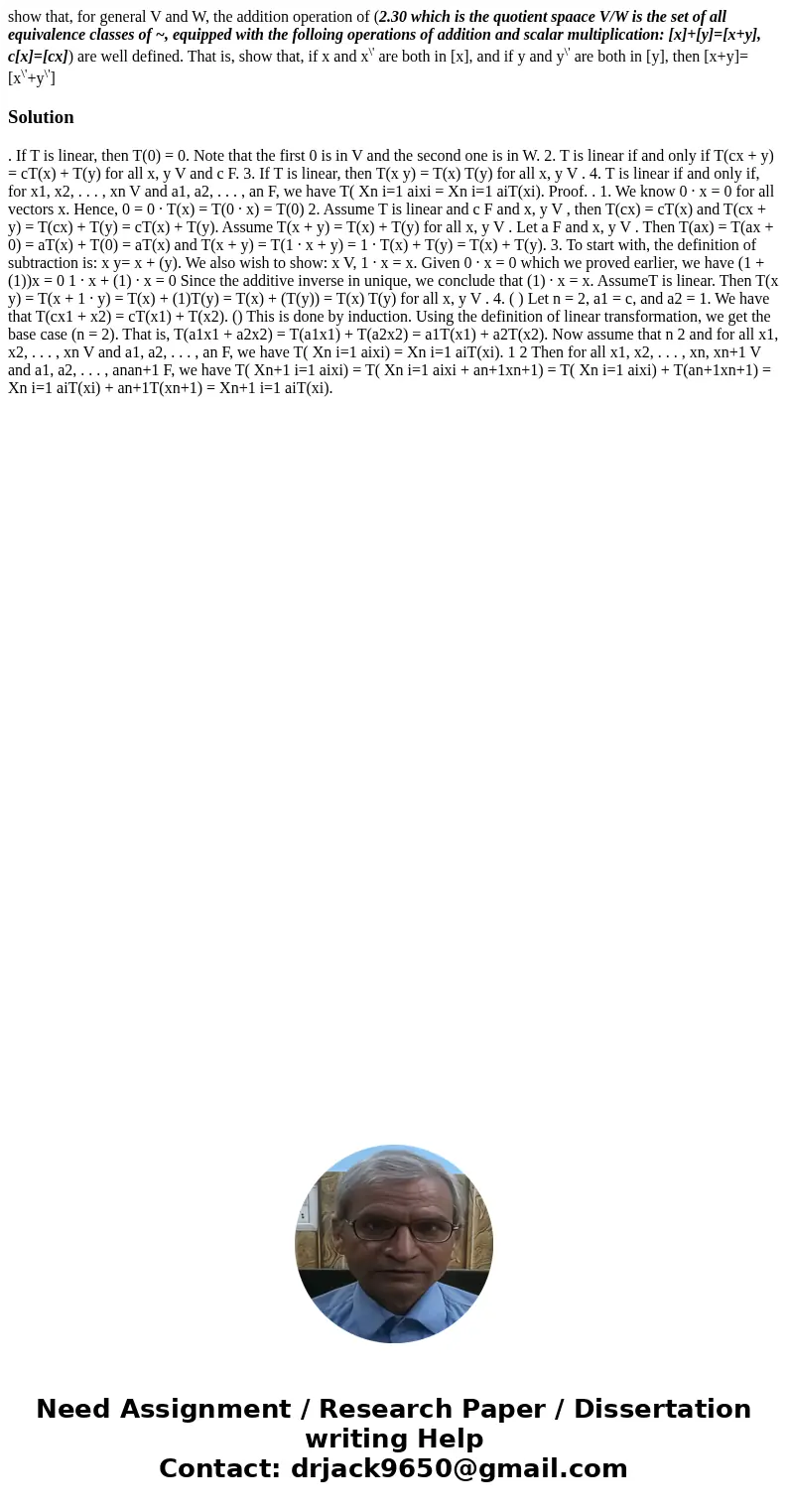show that for general V and W the addition operation of 230
show that, for general V and W, the addition operation of (2.30 which is the quotient spaace V/W is the set of all equivalence classes of ~, equipped with the folloing operations of addition and scalar multiplication: [x]+[y]=[x+y], c[x]=[cx]) are well defined. That is, show that, if x and x\' are both in [x], and if y and y\' are both in [y], then [x+y]=[x\'+y\']
Solution
. If T is linear, then T(0) = 0. Note that the first 0 is in V and the second one is in W. 2. T is linear if and only if T(cx + y) = cT(x) + T(y) for all x, y V and c F. 3. If T is linear, then T(x y) = T(x) T(y) for all x, y V . 4. T is linear if and only if, for x1, x2, . . . , xn V and a1, a2, . . . , an F, we have T( Xn i=1 aixi = Xn i=1 aiT(xi). Proof. . 1. We know 0 · x = 0 for all vectors x. Hence, 0 = 0 · T(x) = T(0 · x) = T(0) 2. Assume T is linear and c F and x, y V , then T(cx) = cT(x) and T(cx + y) = T(cx) + T(y) = cT(x) + T(y). Assume T(x + y) = T(x) + T(y) for all x, y V . Let a F and x, y V . Then T(ax) = T(ax + 0) = aT(x) + T(0) = aT(x) and T(x + y) = T(1 · x + y) = 1 · T(x) + T(y) = T(x) + T(y). 3. To start with, the definition of subtraction is: x y= x + (y). We also wish to show: x V, 1 · x = x. Given 0 · x = 0 which we proved earlier, we have (1 + (1))x = 0 1 · x + (1) · x = 0 Since the additive inverse in unique, we conclude that (1) · x = x. AssumeT is linear. Then T(x y) = T(x + 1 · y) = T(x) + (1)T(y) = T(x) + (T(y)) = T(x) T(y) for all x, y V . 4. ( ) Let n = 2, a1 = c, and a2 = 1. We have that T(cx1 + x2) = cT(x1) + T(x2). () This is done by induction. Using the definition of linear transformation, we get the base case (n = 2). That is, T(a1x1 + a2x2) = T(a1x1) + T(a2x2) = a1T(x1) + a2T(x2). Now assume that n 2 and for all x1, x2, . . . , xn V and a1, a2, . . . , an F, we have T( Xn i=1 aixi) = Xn i=1 aiT(xi). 1 2 Then for all x1, x2, . . . , xn, xn+1 V and a1, a2, . . . , anan+1 F, we have T( Xn+1 i=1 aixi) = T( Xn i=1 aixi + an+1xn+1) = T( Xn i=1 aixi) + T(an+1xn+1) = Xn i=1 aiT(xi) + an+1T(xn+1) = Xn+1 i=1 aiT(xi).

 Homework Sourse
Homework Sourse